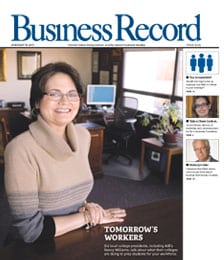Microsoft windows of opportunity?

Dear Mr. Berko:
Microsoft Corp. is trading at $24.93, which I think is cheap. Please give me your opinion on this great company as a long-term (three- to five-year) investment. D.R., Springfield, Ill. Dear D.R.:
I wouldn’t touch Microsoft (MSFT-$24.93) and neither would my highly esteemed friend, who was Donaldson Luftkin Jenrette’s top analyst a decade ago. He tells me that Linux, which now has more than 3 percent of the personal computer operating system market, is expected to to have 7 percent to 8 percent of this market in the coming three years. Though that’s just a nick on a stick in the whole scheme of things (MSFT has 94 percent), it’s very clear that Linux is an excellent and impressive alternative to Windows desktop and laptop PCs.
Linux is gaining good turf in MSFT’s back yard. In November, China announced that Linux would be its operating system of choice, and about the same time, IBM challenged its 320,000 employees to move to Linux. Then in January, the Israeli government announced that it will convert all its desktop Windows machines to Linux, while many large corporations in the United States, Japan and Europe are seriously considering the Linux system. In a poll conducted by Merrill Lynch late in 2003, nearly 50 percent of the companies surveyed indicated that they would be willing to replace Windows desktop with Linux.
There are a number of factors making Linux the operating system of choice throughout the world:
1. It’s an open-source software package that is becoming easier to use.
2. Companies can purchase Linux and Sun Microsystems’ various programs for about $90 or download free versions. Meanwhile, comparable MSFT software would cost more than $600.
3. The Linux technology is improving. Though its applications don’t have as many features as MSFT’s, Linux’s applications provide all the capabilities that almost everyone requires.
4. The box-makers like IBM and Hewlett-Packard are promoting Linux desktop, while Sun and Novell have made Linux the linchpin of their desktop strategies.
5. Finally, in response to the inroads being made by Linux, MSFT has been forced – on occasion, like when the city of Munich, Germany, began using Linux – to cut its prices by 30 percent to 35 percent.
I agree with my friend that MSFT is one darned fine company with mountains of cash, zero debt and some of the finest software packages in our galaxy. I also believe that he is as right as an angel when he says MSFT will probably continue to report higher revenues and earnings for the coming few years. I also agree with him when he says MSFT’s revenue and earnings growth may begin to ebb by 2007-2008 as Linux gains acceptance in Europe, Latin America, the Pacific Rim and the Mideast. I also agree that Linux is, inarguably, the quintessential better mousetrap.
Many MSFT aficionados and die-hards are reluctant to believe their company may have a serious competitor. Well, it does, and Linux is a verifiable fact. But facts can be stubborn things and, whatever may be our desires may be, they do not alter the facts or the evidence.
Some suits on Wall Street seem to agree: In 1999, the high stock price for MSFT was $60 and it’s been downhill every year since. The high prices for MSFT in 2000, 2001 2002 and 2003 were $58, $38, $35, and $30, respectively. So far, the high price for MSFT during the last 12 months is $30.
Frankly, Microsoft’s explosive growth of the 1990s may have been an anomaly and unless the company finds a new market, its revenue growth may slow considerably. After the U.S. antitrust suit is behind it, MSFT is likely to face civil suits because the appeals court found the company abused its monopoly position.
Today, the European Union countries are after MSFT for similar violations, which may turn potential Windows users to Linux.
Finally, unearned revenue in the last two quarters of 2003 fell significantly more than anticipated. This indicates a serious weakness and significant potential problems in multiyear volume licensing to corporations.
Meanwhile, Standard & Poor’s, Value Line and numerous other prestigious analytical services have placed strong “buy” recommendations on MSFT at this price. But I think they are nuts. Though MSFT may have the short-term potential to move perhaps to the $33-$35 level, I think the stock may be a long-term disappointment.
Please address your financial questions to Malcolm Berko, P.O. Box 1416, Boca Raton, Fla. 33429 or e-mail him at malber@adelphia.net.







